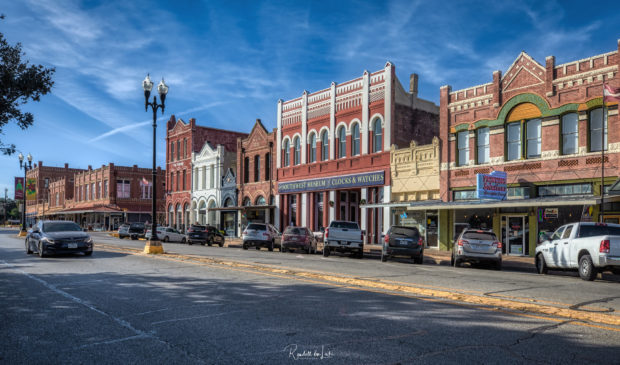About the Author
Chad Swiatecki is a 20-year journalist who relocated to Austin from his home state of Michigan in 2008. He most enjoys covering the intersection of arts, business and local/state politics. He has written for Rolling Stone, Spin, New York Daily News, Texas Monthly, Austin American-Statesman and many other regional and national outlets.
Newsletter Signup
The Austin Monitor thanks its sponsors. Become one.
Most Popular Stories
- Council members celebrate unanimous defeat of bill that proposed putting Austin under state control
- A once-banned type of building is back in favor – and the Planning Commission approves
- Eviction crisis spreads as affordability pressures worsen
- Austin churches answer prayers for affordable housing – by building it themselves
- Audit shows former Austin Water employee directed search of boss’ inbox
-
Discover News By District

Austin’s growing pains impacting housing, jobs east of 130
Thursday, October 20, 2022 by Chad Swiatecki
The push of economic development flowing from Austin has officially hit the SH-130 corridor, and is bringing the same pressure on infrastructure, housing and workforce development that have become regular talking points in Austin political circles for years.
At a recent Urban Land Institute Austin luncheon hosted by Huston-Tillotson University, leaders from Taylor and Caldwell County shared some of the details of the after-effects of negotiations and deals to bring major tech manufacturing facilities to their communities. In Taylor, where a $17 billion Samsung facility will be constructed in the coming years, assessed property values have doubled in a year, with “more prospects than we have available sites,” Mark Thomas, president and CEO of the Taylor Economic Development Corporation, said.
“We’re still a 17,000-person community that before Samsung was valued at $1 billion. In building a $17 billion plant we had to solve for all of the issues … but the good thing about landing Samsung is it’s created so much demand and I’ve never seen anything like this after doing this for 35 years,” he said, noting that energy utilities able to handle 600 megawatts of demand was one of Samsung’s biggest needs. “There’s so much (housing) demand now and with the kinds of developers that are coming in, it’s all about available infrastructure and kinds of homes (that) can be built.”
It’s been a slightly different story in Caldwell County, where Micron Technology, Inc. prospected the area for a $100 billion semiconductor manufacturing site before recently selecting an alternate location in upstate New York. Caldwell County Judge Hoppy Haden said the area has felt the pressure from companies looking to relocate to Central Texas, with two other major tech companies calling the day after the Micron decision to make inquiries into locating major facilities there.
Haden said the arrival of thousands of high-paying tech jobs in the near future along with Lockhart’s growing popularity among artists could introduce a similar dynamic as in Austin, where musicians and artists are feeling the cost-of-living pinch due to wealth moving into the area.
“The housing market gone up quite a bit, with no slowdown, and we can’t build them fast enough,” he said. “We have a lot of artists moving down and they have invested heavily in the community and it’s been amazing to watch. We’ve watched the (town) square in Lockhart go from half of the buildings being boarded up five years ago to full of restaurants and bars and live music and every weekend it’s like a little Sixth Street that’s fun to watch.”
As an example of the change in the local real estate market, Haden said the median home price in Caldwell County was $149,000 in 2019, compared to around $350,000 now with much of that increase caused by migration from Austin and San Antonio.
Closer to Austin, the effects of robust business interests continue to be felt throughout the city’s Eastern Crescent communities, with properties around the burgeoning Colony Park transit-oriented development seeing dramatic price increases in recent years. Greg Weaver, executive vice president of Catellus Development Corporation, which is developing Colony Park, said housing supply throughout Central Texas is the biggest pain point that politicians and residents have to work together to solve. The housing issue has become so acute, he said, that corporate relocations now hinge on the ability of being able to attract workers and find them appropriate living spaces, rather than being determined solely by the preferences of company executives.
“Housing is more the elephant in the room in the greater Austin area. From an economic development standpoint, Austin has gotten so expensive that in office and HQ deals the most important thing is the HR department’s worries about employees and if they can afford to live there,” he said. “There’s this issue and growing pain that our region is dealing with, and whether you’re in the chamber of commerce or (Real Estate Council of Austin) … it’s something the area needs to focus on. It’s great that things are good for our industry but there could also be a canary in a coal mine with affordability turning the spigot off.”
Photo made available through a Creative Commons license.
The Austin Monitor’s work is made possible by donations from the community. Though our reporting covers donors from time to time, we are careful to keep business and editorial efforts separate while maintaining transparency. A complete list of donors is available here, and our code of ethics is explained here.
You're a community leader
And we’re honored you look to us for serious, in-depth news. You know a strong community needs local and dedicated watchdog reporting. We’re here for you and that won’t change. Now will you take the powerful next step and support our nonprofit news organization?






